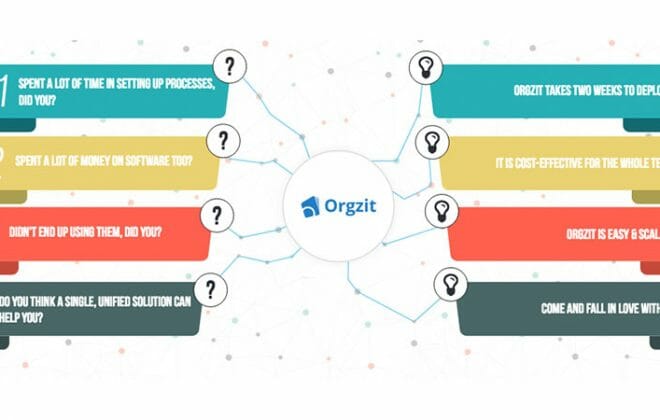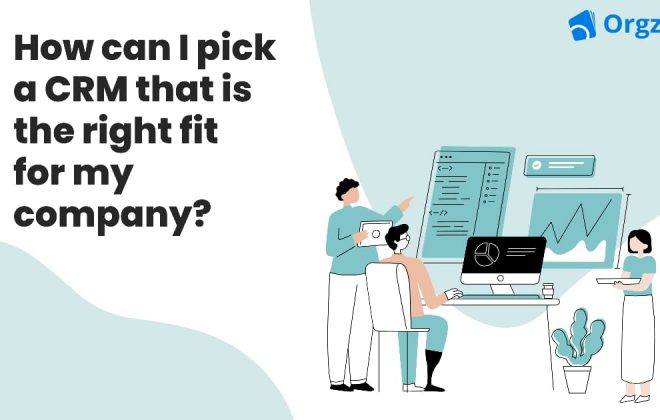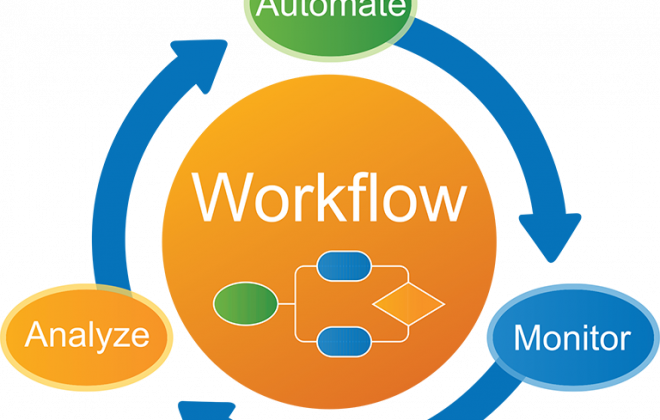From Input to Impact—Why Do Stakeholders’ Involvements Matter in the CRM Buying Journey?
A recent study indicates that the successful implementation of customer relationship management (CRM) is not easy and is a complex task. Almost 70% of CRM implementation projects fail to achieve their goals. The question arises: why does this happen?
Let’s understand this with a problem statement—Assume you have experienced a load of leads
that goes unanswered due to backlog and too much of a load on your sales team because your sales team is busy with their manual tasks and trying to balance between lead nurturing and manually feeding data.
Consequently, they are unable to take care of many potential leads that get dropped. This indicates that your business growing. Your teams are swamped with leads, you are getting orders. But alarmingly, due to the lack of an auto system, this is also causing many leads to drop.
To address this, you decide to choose an auto system for your team, opting for a CRM. This decision brings up some questions in your mind—
- What exactly is CRM software?
- How do I know if my business needs one?
- Picking the right CRM from the myriad of options can be tricky—how do you make sure you’re making a smart decision?
- And once you have it, how does it really help your team?
This is where you need to prioritize the considerations of your stakeholders that truly matter!
Understand the Stakeholder Landscape
Let’s first understand the stakeholders responsible for most production and customer-facing aspects—these are the people who are with you, indifferent, and likely some opposed.
Decision-makers
Decision-makers are the ones who hold the first authority to approve and finalize the CRM purchase. They set the overall strategy, goals, and budget for the CRM implementation.
End-users
Your purchase will be wasted if your CRM is not used properly. So, the next stakeholders in your CRM buying are the end Users who directly interact with the CRM system on a daily basis. Their feedback and input are aligned with the practical needs and preferences of the team in terms of business goals.
For example, the sales team can utilize CRM for Lead Tracking, Sales Funnel Management, Lead Scoring, and Qualification, aligning the sales process and pipeline. Marketing teams can utilize CRM to close more deals and facilitate follow-ups. Meanwhile, customer support teams can leverage CRM for enhanced customer interactions and support.
IT Professionals
IT professionals are the ones who develop the information network and infrastructure for a CRM. They create and manage the servers, computers, databases, and software programs necessary for people at a company to communicate and share information. They assess the compatibility of the CRM system with existing IT infrastructure, data security, and managing technical integrations.
Nowadays, there are many CRMs available in the market that do not require a business to have a separate IT team. No-code CRM platforms provide agility, flexibility, and the necessary support in building and maintaining software. The CRM vendors provide the IT support.
The Role of These Stakeholders in the CRM Buying Journey
- Decision-makers show you the overall strategy and allocate resources for CRM adoption. Their decisions influence the choice of CRM software and its alignment with business objectives.
- End-users actively engage with the CRM system daily to provide feedback on user experience and their functional requirements so that the CRM aligns with the team’s workflow with their experience.
- IT professionals contribute their technical expertise by assessing the compatibility of the CRM with existing systems’ data security and managing technical aspects of the implementation.
- Customer Support Teams offer insights into customer interactions and needs. They recognize you through exact customer relationship management and improve support processes.
Why these Stakeholder Involvement matter?
If not everyone is on the same page or trained to use any tool, it’s like having a fancy tool but not knowing how to make the most of it. That’s why getting everyone involved and onboarding is the key to making the most out of your CRM. Understanding and anticipating the challenges associated with CRM implementation is more important to consider for several reasons—
7 common pitfalls in comprehensive involvement
Here are seven common pitfalls that organizations may face without comprehensive stakeholder involvement in the CRM buying process—
Lack of Clear Understanding of Business Needs
– Without getting input from end-users and decision-makers, it leads communication gap between the solution that doesn’t align with the organization’s specific needs and goals.
What are your goals—
- Is it increasing revenue?
- Is it retaining customer?
- Is it customer satisfaction?
With all these goals, your CRM will be sued and leveraged differently. For example,
John, owner of an HVAC service company, employs CRM for customer retention.
- By centralizing data, CRM enables proactive communication, personalized service plans, and automated follow-ups.
- Addressing ABC Real Estate’s concerns, John fosters a lasting relationship, showcasing commitment and understanding.
- This strategic CRM use significantly boosts customer retention in the competitive B2B HVAC industry.
Resistance to Change from End-Users
– When end-users are not actively involved, there can be resistance to adopting new CRM tools, leading to low user adoption rates and decreased overall effectiveness.
Tips on how to reduce resistance
Inadequate IT Integration
– Without the input of IT professionals, the chosen CRM system may not be able to integrate with existing IT infrastructure, which raises technical challenges and potential disruptions.
Budget Misalignment
– Decision-makers set the budget for CRM implementation. Lack of involvement may result in budget constraints or overspending, affecting the overall success of the project.
Overlooking Customer Support Needs
– Without insights from customer support teams, the selected CRM may not be able to address customer interaction and support requirements, impacting overall customer satisfaction.
Limited User Training and Support
– If end-users are not actively engaged, there may be insufficient training and support, leading to underutilization of the CRM system and reduced overall efficiency.
5-Step Approach to Stakeholder Engagement
Here are the 5 evolutionary stages of stakeholder engagement—that really matter in a buying journey like this—
1. Early-Stage Involvement
- Include end-user representatives from each department to secure early engagement and long-term commitment.
- Set up a multi-disciplined project group to assess and define key CRM requirements for the whole business. This group will gather information from their colleagues and disseminate it to the group for discussion and action.
- Include end-user representatives from each department to secure early engagement and longer-term commitment. Deep practical knowledge of existing data management practices, customer interactions, and activity workflows is crucial.
- Establish clear objectives, define timelines, and delegate roles and responsibilities within the task group. Foster a motivating atmosphere that encourages positive communication with broader stakeholders.
2. Research and Shortlisting
- Identify CRM champions early on to create a positive foundation for thought and action across the wider stakeholder community.
- Consider the personal benefits CRM will bring to individual roles and working days.
- Finding CRM champions early will provide a good foundation for positive thought and action across the wider stakeholder community.
- Consider the personal benefit CRM will bring to an individual’s role and working day.
- Identify those who will be the most vocal about their concerns and avoid them fostering negativity within the wider group.
- Bringing them early, educating them on value and the positives, giving them responsibilities to help make it a success, and ultimately turning them from blockers to champions will deliver much better results.
3. Trial and Evaluation
- Engage the wider stakeholder community, including end-users, managers, and key decision-makers.
- Create a communication plan outlining the CRM vision, benefits, strategy, schedule, and activities to boost confidence in the project’s positive outcomes and alleviate fears.
- Provide regular updates via your intranet, email, newsletter, or meetings with individual managers or a wider group.
- Give stakeholders the opportunity to voice their concerns and ideas. This may be through online surveys, polls, and even competitions that can bring a fun element into the proceedings.
4. Ongoing Training and Support
- Involve end-users, managers, and designated product experts or super users.
- If your CRM vendor provides training services, consider company-wide training sessions with your vendor’s experts. This option ensures that your team receives training directly from those who know the product best.
- In cases where you have a substantial number of staff to train, it can be beneficial to designate a product expert or establish a group of super users. These individuals can be in-house trainers, sharing their knowledge and expertise with other staff members.
5. Adapting to Evolving Business Needs
- Engage CRM champions, end-users, and individuals with in-house CRM expertise.
- Regularly communicating and promoting CRM-related customer experience, productivity, and process efficiency wins will demonstrate value and return on investment.
- Developing in-house CRM expertise and encouraging users to contribute improvement ideas is a way to help your teams engage more deeply with the solution. This engagement will yield further value, benefiting both individuals and the business.
Key takeaway
Lack of stakeholder engagement leads to common pitfalls such as resistance, integration issues, budget misalignment, and insufficient training, hindering CRM effectiveness.
To overcome these challenges, the 5-step approach emphasizes early involvement, research, trial, ongoing support, and adaptation to evolving business needs.
Give Orgzit a chance to clear any more doubts you have, and we will be happy to help!!
For more related information, check out here!
Connect with us for a free consultation and expert guidance at https://orgzit.com/book-demo/
Decision-makers, end-users, and IT professionals are pivotal stakeholders, each contributing to different aspects of the implementation.
Decision-makers set the overall strategy, goals, and budget for CRM adoption, influencing the choice of CRM software and its alignment with business objectives.
Without active involvement, end-users may resist new CRM tools, leading to low adoption rates and decreased overall effectiveness.
Strategies such as a Digital Transformation Readiness test and Change Management can help reduce resistance and enhance user adoption.
Involving end-users and providing training ensures optimal utilization of the CRM system, preventing underutilization and inefficiencies.









